Secrets of JMAG-Express
Many users have inquired about the difference between the calculation methods used in JMAG-Express and JMAG.
Therefore, We are revealing the secrets behind the calculation methods to our users only.
| Secret content | Posted Date |
|---|---|
| 1. Calculation Method used in Express | 2009-09-25 |
| 2. Accuracy of Express | 2009-09-25 |
1. Calculation Method used in Express
Many people have asked if JMAG-Express uses the magnetic circuit method because of the vast speed the calculations are performed, when in fact, JMAG-Express uses the finite element method (FEM). However, the purpose of the calculation performed in JMAG-Express and JMAG differ. JMAG-Express focuses on evaluating the approximate motor characteristics by obtaining the flux linkage, motor inductance, and iron losses for a current value with the finite element method, and then uses these results to obtain the torque, losses, and efficiency. In the previous version of JMAG-Express, a fixed current of 1 A is applied which causes the results to become more inaccurate as the difference in the current driving the motor increases. However, in JMAG-Express ver. 1.00901, the accuracy of the calculation has been enhanced by applying currents appropriate for the model.
2. Accuracy of Express
To provide proof rather than conjecture, we have compared the results obtained using JMAG-Express Ver. 1.00801 and the results obtained using JMAG-Studio for an analysis of the IPM motor indicated in Fig. 1. Using JMAG-Studio, the torque and losses are calculated from each current value that is iteratively obtained for a specified voltage at each rotation speed. Using JMAG-Express Ver. 1.00801, the maximum current is set to a standard value of 5 A.
The comparison of these results is indicated in Fig. 2. Although the results do not match exactly, the results obtained using JMAG-Express Ver. 1.00801follow the results obtained in JMAG-Studio closely.
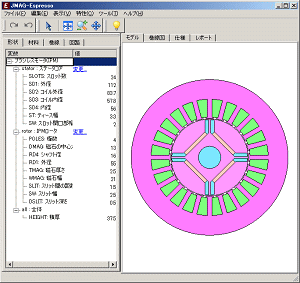 Fig. 1 IPM motor
Fig. 1 IPM motor
The results obtained for a maximum current that is exaggerated to 50 A are also compared to show the current dependency. The comparison of these results is indicated in Fig. 3. The difference in the results that are obtained by JMAG-Express Ver. 1.00801 and JMAG-Studio are obvious. The difference in the results is especially large when the current is substantial at low rotation speeds. However, as described above, JMAG-Express ver. 1.00901 has been enhanced to address these issues and exceed our users’ expectations.
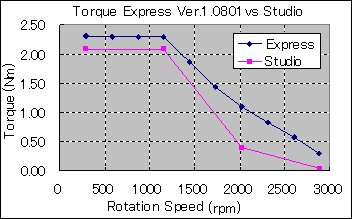 Fig. 2-a Comparison of the torque
Fig. 2-a Comparison of the torque
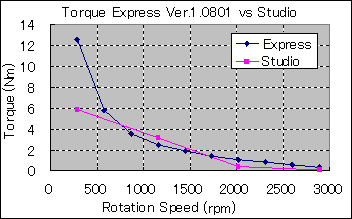 Fig. 3-a Comparison of the torque
Fig. 3-a Comparison of the torque
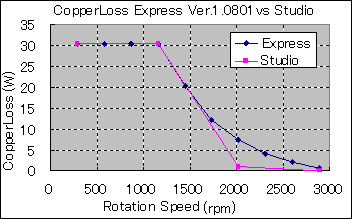 Fig. 2-b Comparison of the copper losses
Fig. 2-b Comparison of the copper losses
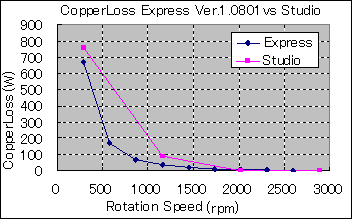 Fig. 3-b Comparison of the copper losses
Fig. 3-b Comparison of the copper losses
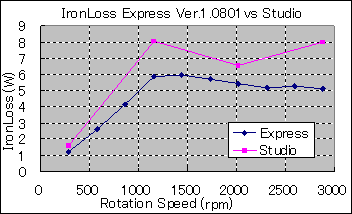 Fig. 2-c Comparison of the iron losses
Fig. 2-c Comparison of the iron losses
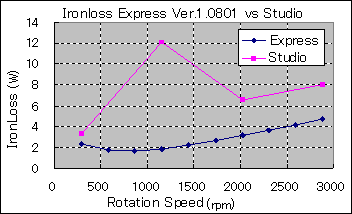 Fig. 3-c Comparison of the iron losses
Fig. 3-c Comparison of the iron losses


